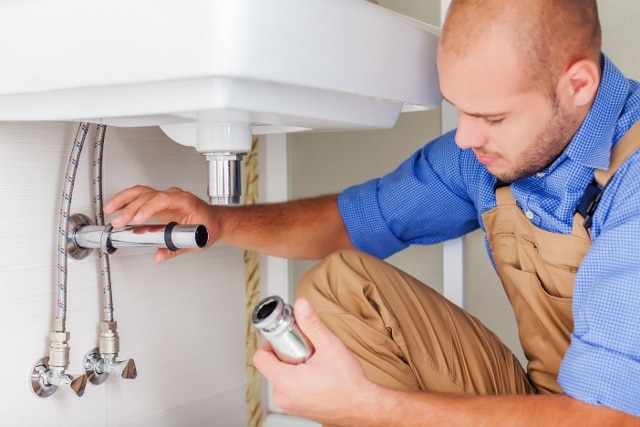When to Do It Yourself and When to Reach Out to a Piping Expert
When to Do It Yourself and When to Reach Out to a Piping Expert
Blog Article
Just how do you really feel in regards to When to Call a Plumber? DIY or Professional Help?

Introduction
Pipes problems can range from small troubles to significant migraines, often triggering home owners to choose in between taking on the issue themselves or calling in an expert plumbing professional. Knowing when to DIY and when to seek expert assistance can save time, money, and stop potential disasters. This article explores the elements to consider when making this essential decision.
Benefits of DIY Plumbing
Tackling pipes tasks yourself can be rewarding in numerous methods, especially for simpler tasks.
Complexity of Jobs
Some plumbing issues call for specific expertise and tools past typical home owner capabilities. Mishandling intricate troubles can result in more damage and expensive repairs.
Safety and security Concerns
Dealing with plumbing systems includes dangers such as exposure to water damage, capacity for electrical hazards, and handling tools inaccurately. Safety and security safety measures should be observed to prevent accidents and make certain reliable repair work.
Indicators to Call a Professional Plumber
Identifying when a pipes problem exceeds do it yourself abilities is essential to preventing aggravating troubles.
Signs of Complex Problems
Instances include:
Prompt professional intervention is needed to attend to these concerns properly and decrease damages.
Do It Yourself Plumbing Tips
For successful DIY plumbing, it's essential to be prepared with the right devices and adhere to appropriate procedures.
Basic Tools and Products
Secret tools for do it yourself pipes:
Step-by-Step Guides
Clear directions ensure risk-free and reliable do it yourself repair services:
Choosing the Right Time to Do It Yourself
Establishing when to take on pipes tasks yourself calls for analyzing both the intricacy of the issue and individual convenience levels.
Assessment List
Think about:
Price Savings
Do it yourself plumbing tasks typically conserve money by preventing professional service fees. Jobs like fixing minor leaks, replacing faucets, or mounting brand-new showerheads are examples where house owners can take care of repairs without working with a plumber.
Ability Enhancement
Participating in DIY pipes provides a possibility to discover and improve functional skills. Standard tasks encourage property owners to understand their pipes systems better and obtain confidence in handling small repair services individually.
Risks of DIY Pipes
While DIY tasks provide advantages, particular threats ought to be very carefully considered before attempting repairs.
When to Definitely Call a Specialist
Specific situations require instant expert interest to prevent substantial damage or security hazards.
Emergency Scenarios
Instances include:
Finding and Employing an Expert Plumbing Professional
Picking a qualified plumbing makes sure trusted solution and satisfaction in settling pipes problems.
Requirements for Selection
Factors to think about:
Price Evaluation: do it yourself vs. Professional Solutions
Contrasting the financial ramifications of do it yourself initiatives versus professional plumbing services assists in making educated decisions.
Financial Considerations
Examine:
Verdict
Choosing whether to DIY or call a specialist plumber rests on recognizing the complexity of plumbing problems and personal capabilities. By weighing the benefits and threats, home owners can make educated selections that promote efficient maintenance and safeguard their homes from plumbing catastrophes.
DIY vs. Professional Plumbing Repairs: When to Call a Pro
When dealing with plumbing issues or embarking on renovation projects, homeowners have to decide whether or not they want professional help with their home’s plumbing system. While master plumbers can complete just about any plumbing project, they can cost a pretty penny. On the other hand, DIY plumbing projects can very quickly go awry, which can make things worse.
In this blog, we’ll explore common plumbing projects that homeowners can confidently tackle, provide insights into the essential tools needed, and discuss critical DIY mistakes to avoid. Understanding these distinctions not only helps in maintaining the efficiency and longevity of your home’s plumbing system but also ensures safety and cost-effectiveness in your repair endeavors.
Installing/Replacing Certain Plumbing Fixtures
Most homeowners should be able to install new plumbing fixtures or replace old ones that are damaged or old. Using basic tools, you should be able to effectively:
Replace faucet washers or cartridges Replace showerheads Install a new toilet seat Hook up new appliances Replace hose bibbs Unclogging Drains
You should also be able to fix any clogged drains within your home by using a plunger, plumber’s snake, or natural solutions like baking soda and vinegar. These can often clear clogged sinks or bathtubs without needing professional drain cleaning assistance.
Fixing Running Toilets
Another plumbing issue many homeowners may be able to handle is a running toilet. Toilets may run more than they should due to a faulty flapper or float inside the tank. Toilet replacement parts are easy to find and often come with easy-to-follow instructions.
Repairing Leaky Faucets
A dripping faucet can not only be an annoyance, but it can also be a waste of water. Leaky faucets can normally be fixed with basic tools and a basic understanding of how they work, making them easy to fix.
Adjusting Water Heater Temperature
If you are able to follow basic safety precautions, you should be able to adjust the temperature on your hot water heater, which can improve your home’s energy efficiency and also increase comfort.
Fixing Minor Leaks in Pipes
For small plumbing leaks, particularly ones at pipe joints, using plumbing tape or a patch kit can be a temporary fix while you decide on a more permanent solution. Repairing broken pipes, however, can be more difficult and may require professional attention.

I am just very inquisitive about DIY vs. Professional Plumbing Repairs: When to Call a Pro and I really hope you liked my post. Those who enjoyed our post if you please do not forget to pass it around. Thanks so much for going through it.
Click Here Report this page